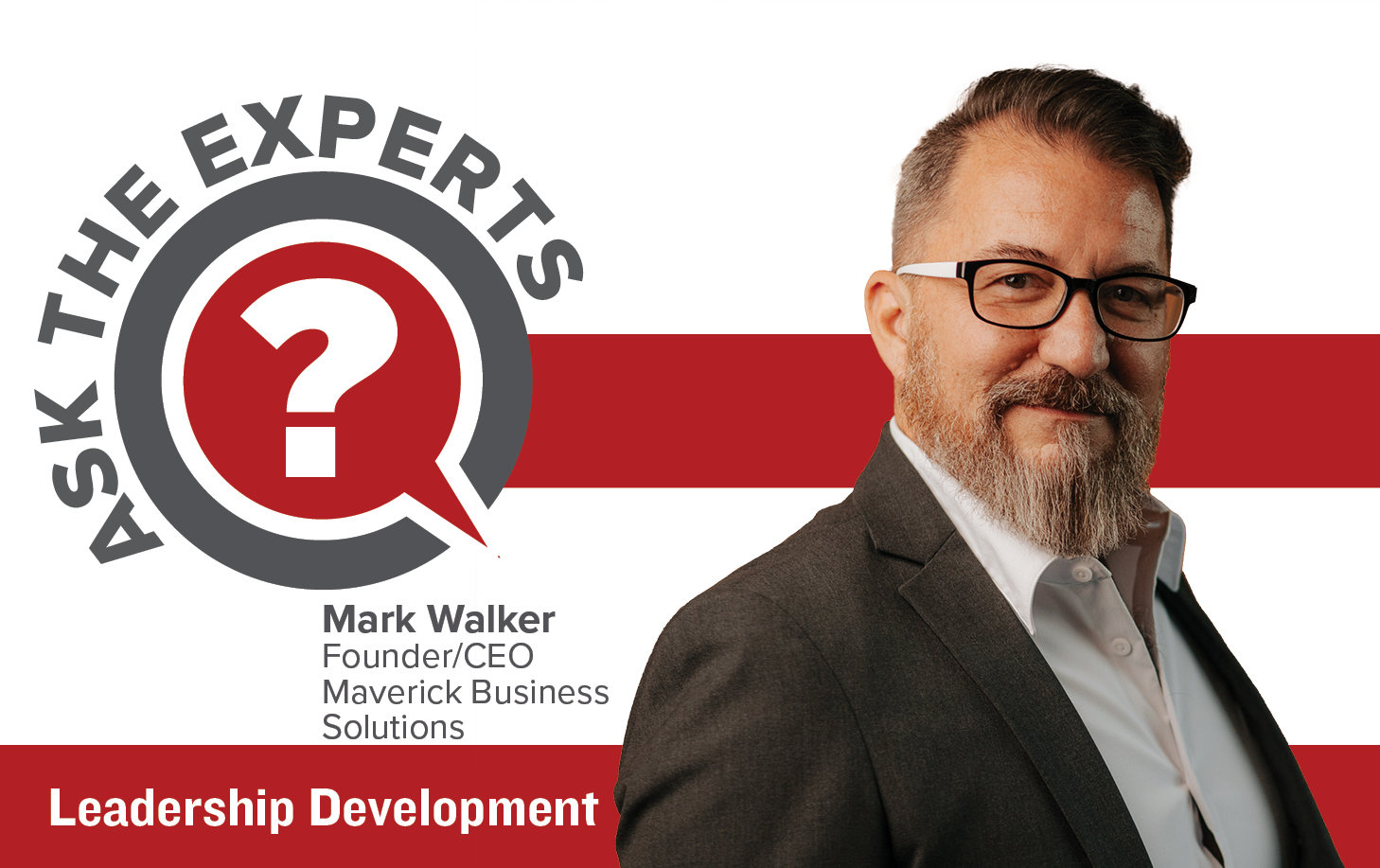Mark is a seasoned and accomplished leader with over 30 years of expertise in fields including ministry, finance, business, and counseling. He is dedicated to helping others reach their full potential and achieve success, offering valuable perspective and guidance to those seeking to advance their careers. As a highly skilled business coach, Mark is a gifted teacher and an effective speaker who specializes in helping business leaders enhance their leadership skills and build a culture of leadership within their organizations. He has worked with a wide range of businesses, from mega churches to small solo ventures, and is renowned for his ability to inspire and motivate others. Mark, much like Gandalf, is wise, nurturing, and always ready to lend a helping hand. He founded Maverick Business to assist business leaders in breaking away from traditional methods and pushing the boundaries of their leadership. If you are looking to elevate your leadership skills and achieve success in your career, Mark is the perfect coach to guide you on your journey.
What’s the best way to turn my side hustle into a business?
In today's fast-paced and everchanging economy, many individuals are looking to turn their side hustles into successful businesses. The flexibility and potential for financial independence that come with being your own boss are enticing, but it's important to approach the transition strategically. Here are three key points to consider when transforming your side hustle into a thriving business:
1. Start with a problem to solve -- The foundation of any successful business lies in its ability to solve a problem or address a need for a customer. Take a step back and identify the core issue that your side hustle aims to solve. By understanding the pain points of your target market, you can tailor your products or services to offer a solution that stands out from the competition. For instance, if your side hustle involves selling homemade skincare products, dig deeper to determine the specific problem you are addressing. Are you targeting customers with sensitive skin who struggle to find suitable products? Or perhaps your focus is on providing natural and sustainable alternatives in an industry dominated by synthetic ingredients. Whatever the case may be, a clearly defined problem will serve as the guiding force for your business strategy and differentiation.
2. Create three economic goals with deadlines -- Transitioning from a side hustle to a full-fledged business requires careful financial planning and goal setting. Setting economic goals helps you gauge your progress, keeps you motivated and ensures that your business remains sustainable in the long run. Start by identifying three key economic goals that align with your vision for the business. These goals should be specific, measurable, attainable, relevant and time-bound (SMART). For example, you may set a goal to achieve a certain monthly revenue target within the first year of operating as a full-time business. Additionally, you might aim to increase your profit margin by a certain percentage over the next two years. By setting clear goals with deadlines, you create a roadmap for success and give yourself something to strive for. Remember to regularly review and update your goals as your business evolves. This will allow you to adjust your strategies and priorities based on market conditions, emerging opportunities and your own aspirations.
3. Stop trying and start training -- As you navigate the transition from a side hustle to a business, it's crucial to invest in your own personal and professional growth. While you may have acquired valuable skills through your side hustle, there is always room for improvement and expansion. Allocate time and resources to enhance your knowledge and expertise in areas directly related to your business. This could involve enrolling in online courses, attending workshops or conferences, or seeking mentorship from industry experts. By continuously learning and upskilling, you position yourself as a credible and competent business owner and you equip yourself with the tools needed to overcome challenges and seize opportunities. Moreover, training extends beyond technical skills.
As a business owner, you'll face various responsibilities, such as marketing, sales, financial management and team leadership. Developing your soft skills, such as communication, negotiation and problem-solving, is equally essential to navigate these aspects successfully.
Remember, Patrick Mahomes is not trying to be a great quarterback, because he trains to be a great quarterback. When you try you give yourself an excuse to give up after a failure. When you train failure is part of it. Also remember, Patrick has a great coach too. Don’t train in business without a good business coach.
How can my business avoid marketing mistakes like a few larger companies have made recently?
You must know your target market. What does your customer value? Which values of theirs match the values of your company? Once you have those answers, lead with those. If your business saves your customer stress, time, energy or money, your marketing should leverage that. If it enriches the lives of your customers, you should leverage that. Walt Disney World makes no claims that it will save you stress, time, energy or money. In fact, it does just the opposite. However, they do promise it’s the most magical place on earth. So regardless of their views, people all over the world still visit Disney World because they value making memories.
I’m going to come right out and say it, if your business offers a product or service, it should solely focus on solving the customer’s problem, so their life is better. Be very careful if you decide as a company to take a social or political stance in your marketing. As we’ve seen recently, you risk negatively affecting the market position of your organization or product(s).
With that said, do customers prefer to buy from a company that has a positive social impact or high values? Yes of course! Let’s also face the fact that sadly today, news of negative impact travels faster than news of positive impact. And even if you create a positive impact, it does not mean that the critics won’t find something negative to say about it.
As a consumer, I do not expect every organization I do business with to hold the same social and political views I do. However, I do expect them to value some of the things I value.
So, what do you need to do?
Don’t confuse values with views. Views are opinions or perspectives on a particular topic or issue. They are shaped by our own personal experiences and social norms and they can be influenced by outside factors and will often change over time. Values on the other hand are guiding principles that define what is important to an organization or individual. They are deeply held and rarely change over time. Views are fluid, values are concrete.
Know your customer. Focus your marketing on the value your product or service brings to the lives of your customers and you will continue to make a difference in their lives. When you do this, your company and products will be respected and you can avoid alienating your customers.
What’s the best way to launch a new product?
Before you invest valuable resources to launch a new product, it's important to have a clear process for choosing products to create. One tool that can help you do this is a Product Brief Worksheet, downloadable for free at
https://mav.business/resources.
It will give you a better prediction of whether the product will sell, identify hidden costs and help you get a head start on marketing copy for the product.
The worksheet will walk you through these five steps:
1. Sales and marketing pressure test: review the proposed sales landing page for the product; ask if the sales team has the tools they will need to sell the product; and create a plan to get buy-in from sales and marketing to move forward with product creation.
2. Product creation process meeting: assign a project leader who will be responsible for this product being created; determine a deadline for the minimum viable product to be shipped; create a rough product creation map or workflow; and make sure every department has the resources needed to create the product.
3. Prepare product for launch meeting: establish sales forecasts and key milestones; make sure the sales landing page is active; and make sure the sales team has all their necessary tools to sell the product and hit the forecast.
4. Assess the MVP (Minimum Viable Product) meeting: launch the product on a limited basis; test the minimum viable product to make sure it works and will solve customer problems; and assign fixes to specific people or departments with deadlines.
5. After-action review meeting: analyze the success of the launch; iterate on the launch to ensure profitable sustainable growth.
By using the Product Brief Worksheet and following this launch process, you can increase the chances of success for your new product. Don't rush into creating a new product without a clear plan in place. Take the time to assess your ideas and create a solid foundation for success. If you would like to assess the profitability of current products, that can be done with a Product Profitability Audit which is also available via the link above.
What makes a good mission statement for my business?
As a business owner, your mission statement is a crucial component of your organization's success. It's not just a statement that sits on your website or painted on your office wall. A powerful mission statement serves as a roadmap for your business, inspiring your team to take action and allow potential customers know what problem you solve for them. So, what makes a good mission statement? In short, it should be an attack on injustice. A mission statement that merely describes what your company does is not enough, that’s more of a vision statement. It should be specific, actionable, and concise. Unfortunately, many businesses fall into the trap of creating long, complex, and vague mission statements that leave their employees and customers confused and uninspired. To craft a powerful mission statement, you need a clear formula that aligns your organization and increases employee engagement. Here is one such formula we use, "We will accomplish x by y because of z." This formula ensures that your mission statement includes what you want to achieve (x), by when (y), and why (z). Consider the case of a private school that we helped to develop a new mission statement. Their original statement was more of a vision statement that lacked the key components of the formula. Generic Academy is a college preparatory school that focuses on academic excellence, character quality and positive social impact by our students. We do this by hiring high quality staff maintaining excellent facilities and programs for students to succeed. We worked with them to create a new mission statement that aligned with our formula and inspired action. Each year, Generic Academy will graduate students that possess superior academic abilities, upright character, and the tools to improve the world around them, because every student deserves an education that will allow them to create a high quality of life for not only them, but for generations that follow. In this case, x, y and z are all here, but y is at the beginning as the words, “Each year…” If you want free professional feedback on your mission statement, send it to us! We’d love to see your mission statement create more success for you.
How do I prepare for uncertainty in my business?
No matter how much you plan and prepare, uncertainty will find you. The only way to battle uncertainty is to embrace it. However, it is key to make sure you also have clarity. It’s okay to be uncertain, but it is not okay to be unclear.
When you’re facing uncertainty, the best thing to do is to go back to a spot where you had clarity. In business, this may be your mission statement. Your mission statement should be clear as to what you are trying to accomplish and when.
Take the road map example: when you want to drive somewhere, you use the map to get a clear idea as to where you are, where you want to go and what roads will get you there. However, it’s okay to be uncertain as to road conditions, how many times you’ll have to stop, what detours you may encounter, etc. In fact, and this is a paradox, but clarity and uncertainty go hand in hand. If you’re clear about where you want to go and when you want to get there, it’s okay to be uncertain about what the journey will look like. This is where adventure lies.
In “Good to Great” Jim Collins introduces the Stockdale Paradox, named for Admiral Jim Stockdale who was a POW in Vietnam. This paradox states that in order to succeed, one must maintain unwavering faith in eventual triumph while simultaneously facing the harshest realities of the present situation. Similarly, in “Man’s Search for Meaning”, Viktor Frankl recounts his experiences in a WWII concentration camp, where his steadfast optimism helped him endure the uncertain and trying times.
In short, to battle uncertainty it is important to find clarity and to maintain a balance between the two. Have a clear understanding of your goals and purpose, but also be open to the unexpected and be flexible. Embracing uncertainty while having clarity allows you to move forward with confidence and courage and ultimately achieve success. Whether in your business or personal life, the key to balancing uncertainty is to have a clear vision and purpose and to remain adaptable and resilient in the face of adversity.
Clarity is optional, uncertainty is not. Embrace uncertainty, but at all costs, find clarity.
How do I prepare my business for recession?
As we approach a potential recession, it is important for businesses to take proactive steps to position themselves for success. Here are three key actions you can take not only to prepare for a recession, but also to improve your business overall:
1. Review your expenses and cut unnecessary costs. Look through your credit card and bank statements and identify any expenses that are not essential to your business. By reducing your overhead, you can build up a cash reserve to help your business weather economic downturns.
2. Position your business as a life raft. Focus on products and services that are essential to your customers during a recession. In addition to basic needs like food and fuel, people also need things to help them cope with the stress and uncertainty of a recession. Consider how you can position your "nonessential" products or services as things that are needed during these challenging times.
3. Become more empathetic. Use empathetic messaging to connect with your customers. People are more likely to respond to businesses that understand what they are going through and show empathy towards their struggles. By adopting a more empathetic approach to your marketing, you can build stronger relationships with your customers and foster loyalty to your business.
While these are just a few strategies that can help your business weather a recession, there are many other actions you can take as well, such as diversifying your customer base, negotiating better rates with vendors and suppliers, and being ready to pivot as needed.
Here are a few things you should NOT do.
1. Panic! Panic and desperation are not a good look for your business. By maintaining a sense of calm authority, you can not only help keep your own thoughts and actions in check, but you can also inspire confidence in your employees, customers and clients. This can help to keep your business running smoothly and successfully, even during challenging times like a recession.
2. Start unnecessary employee cutbacks. This just treats the symptom and aggravates the current economic condition. Keep the lines of communication open with your employees and your team so they know the status of the business and are not surprised by any unexpected cutbacks.
3. Cut your marketing budget. Many businesses find that this is the best place to save money. While it may save money in the short term, it's also the best way to lose business.
If your business does slow down during recession, it is a great time to be innovative. Ask yourself, “What in my business is ripe for reinvention?” It’s also a great time to invest in your team, foster people skills and help them become value-driven professionals.








